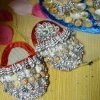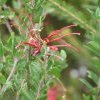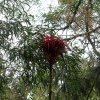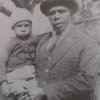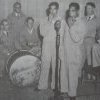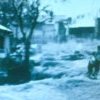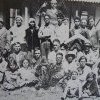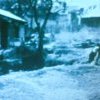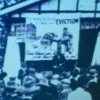1920s
1920
The community at the Salt Pan continues to grow. For instance Ellen and Hugh Anderson’s daughter Dolly marries Tom Williams from the Castle Road River near Coonamble. Goodall and Cadzow, Rivers and Resilience, p.122
[Note: picture of Hugh and Tom Williams on p. 125]
They establish warm relations with non-Kooris living in the same area.
1921
1922
An Aboriginal woman from La Perouse, Annie Bowden, writes to the Sydney Morning Herald: "The women were always taken care of in my case and made much of. There was more discipline in the camps than there is in many white homes today … boys were taught from earliest infancy to respect their mothers and their sisters, and no one woman had more than one husband." Maynard, Fight for Liberty and Freedom, the Origins of Australian Aboriginal Activism, p 49-50
1924
1925
Jack Campbell, living on Burnt Bridge Reserve in northern NSW, escapes with his family to avoid harassment by the APB and settles in Sydney. Rather than live at the closely police supervised reserve at La Perouse, they hear about, and move to, the non-reserve campsite at Salt Pan Creek. Here several of the community leaders have bought housing blocks and are paying them off, which gives much greater protection from interference by officials than when living on a government reserve. There they join other refugees from APB control, like Patty Pitman who has been expelled from reserves for defying the manager. Goodall, Invasion to Embassy, p 145.
1926
Randwick municipal council notifies the APB that it wants the La Perouse reserve revoked and it's residents moved. They argue that "it is in the interests of the Aboriginals themselves to be relocated." A petition opposing this is received by the government and reads: "We, the undersigned, Aborigines of the La Perouse reserve, emphatically protest about our removal to any place. This is our heritage bestowed upon us; in the circumstances we feel justified in refusing to leave." The La Perouse reserve remains after the APB agrees to remodel the reserve housing to bring it in accordance with the Randwick council specifications. Goodall, Invasion to Embassy, p 168-9, see also Dictionary of Sydney.
Jacko Campbell arrives as a 10 year old at the Salt Pan Creek reserve. He recalls catching prawns in hessian bags in the creek using stringy bark torches as they waded through the water. The boys could sell them for 9 Pence a quart or just catch themselves a feed. Jacko recalled, 'We’d go up when we wanted a feed of anything, 'fish and all that! But it was a terrible place for sharks there, in the murky water!' Goodall and Cadzow, Rivers and Resilience, p 120 [Note: picture of Ellen and Hughey Anderson in the 1920’s on Goodall and Cadzow, p 122]
The Koori community at the Salt Pan Creek reserve usually contains about 13 family groups. They include some dispossessed Burragorang families from St Joseph's Farm, recently repossessed by the Catholic Church, and refugees from APB control from the north and south coast. Others are from Cumeragunja near the Victorian border, such as Jack Patten Snr with his sons George and Jack. Bill Onus marries one of the Patten's daughters. Jack Campbell remembers that, "the older men, particularly the Anderson brothers, and old Jack Patten would talk politics all the time... You’d see them old fellas sittin’ around in a ring, when there was anything to be done. Especially when there was anything to be done with the Aboriginal Protection Board." Goodall, Invasion to Embassy, p 160.
1927
Among those living periodically at Salt Pan Creek is Charlie Leon and his vaudeville troop. He is one of many involved in political action, joining the Aborigines Progressive Association led by Fred Maynard. He becomes an elected member of the Aborigines Welfare Board in the 1950's. Later he moves to Herne Bay.











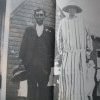
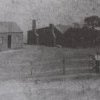
.thumbnail.JPG)
